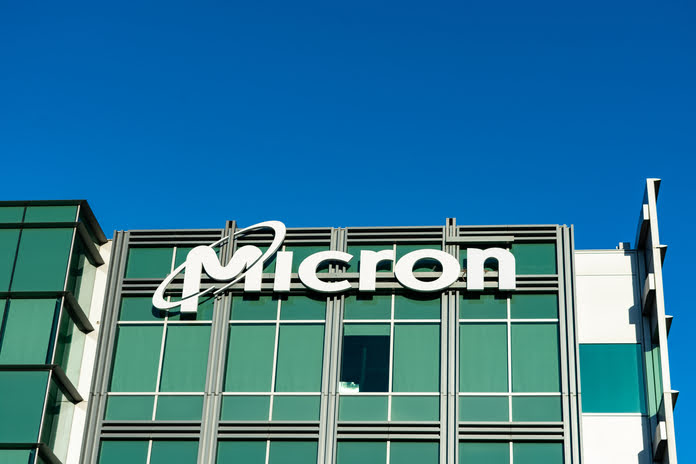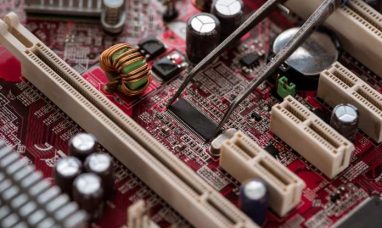Micron Technology Inc (NASDAQ:MU)
The share price of Micron Technology increased after the company reported financial results for its fiscal second quarter that ended on March 2 that were roughly in line with expectations. Despite the fact that a weak market for PCs and smartphones continued to weigh on the company’s results, Micron Technology reported financial results that were about in line with expectations. Micron also said that as part of its initiative to decrease costs, it will reduce staff by around 15%. This is an increase from an earlier commitment to slash headcount by 10%.
But, there are some encouraging indicators for the company that manufactures memory chips.
In a recent interview with Barron’s, the chief business officer of Micron, Sumit Sadana, mentioned that the company’s high customer inventories, which have been a major drag on the company’s financial results, are beginning to show some positive signs of improvement. According to him, there has been “a lot of progress” in the decrease of inventories held by PC vendors, as well as improvement regarding inventories held by smartphone manufacturers.
According to him, there is “still more wood to chop” in terms of inventories at companies that provide computing services for data centers; nonetheless, he anticipates that the inventory circumstances at these companies will be in a healthier state by the end of the calendar year. “It was a tough quarter, but we are seeing good, optimistic signals for the future,” he said.
On Wednesday, Micron’s stock price increased by 5.8% to $62.71 from $60.85.
Micron (NASDAQ:MU) posted revenue for the quarter of $3.69 billion, which was approximately in line with the average estimate of $3.7 billion from Wall Street. The revenue was down 53% from the same time last year, and it was down 10% from the previous fiscal quarter.
On an adjusted basis, the firm lost $1.91 in the quarter, worse than both the company’s expectation for a loss of 62 cents, and the Street consensus forecast for a loss of 86 cents. Micron reported that it had to write down its inventory during the quarter by $1.34 billion, which is equivalent to $1.34 per share.
According to generally accepted accounting rules, each share of the company’s stock was worth less than $2.12 after the loss. The company incurred a loss of $1.81 billion when measured by adjusted Ebitda, which stands for earnings before interest, taxes, depreciation, and amortization. The balance of cash and marketable securities held by Micron at the conclusion of the quarter was $12.1 billion.
In spite of the dismal results, the corporation took a positive stance in both the press statement and the remarks made during the conference call, giving the impression that better times are on the horizon.
Micron CEO Sanjay Mehrotra issued the following remark regarding the company’s financial performance: “Micron produced fiscal second-quarter sales within our guidance range in a competitive market environment.” “The stocks held by customers are showing signs of improvement, and we anticipate a slow but steady improvement in the supply-demand balance within the industry. We continue to have faith in the long-term demand for our products and are making strategic investments to maintain the competitiveness of our product line and technology.
In prepared remarks for the company’s results call, Mehrotra stated that the memory and storage market is witnessing its worst downturn in the past 13 years, citing an “exceptionally bad pricing environment.” Mehrotra’s comments were made in reference to the company’s earnings call.
Yet, he is also of the opinion that the number of days inventory has been outstanding has reached its highest point, and that the business is “near” to resuming its trend of sequential revenue growth. “After this crisis is through, we anticipate a return to normalized growth and profitability in line with our long-term financial plan,” he added. “It’s important to note that these projections are based on current conditions.”
Micron anticipates revenue of $3.7 billion for the third quarter of the current fiscal year, give or take $200 million. This figure is in line with what the Street is expecting. The company has a non-GAAP gross margin of -21%, give or take 2.5 percentage points, and a loss of $1.58 a share on an adjusted basis, which is equivalent to $1.79 a share when using GAAP.
In his comments, Mehrotra asserted that Micron believes the company’s addressable market will hit a record in the calendar year 2025. This belief is in part driven by the memory requirements to run the large language models required for artificial intelligence software. Mehrotra’s comments can be found here. He stated that “we are only in the very early stages of the general deployment of these AI technologies and the potential exponential growth in their commercial use cases.” “We are only in the very early stages of the widespread deployment of these AI technologies and”
According to the chief executive officer of Micron, he believes that the most recent quarter was the bottom of the sales cycle for data centers. Micron forecasts that personal computer (PC) unit volumes will drop by a mid-single-digit percentage by the year 2023, bringing them back to levels not seen since before the outbreak of the Covid-19 epidemic. According to the previous PC projection provided by the company, the number of units sold this year was expected to drop by the low to mid-single digits.
Previous guidance had called for smartphone unit volumes to remain stable to slightly increase, but the business now anticipates a modest decrease in smartphone unit volumes in the calendar year 2023.
Micron reported that the revenue from its vehicle business was up 5% in the most recent quarter compared to the same period a year earlier. But, the company observed that demand from the industrial industry “continued to decline.”
Micron anticipates that the bit-demand increase for the industry as a whole will be approximately 5% for DRAM and in the low teens for NAND. These projections are much lower than the company’s long-term expectation of midteens for DRAM and low 20s for NAND. According to the statement made by the corporation, “We estimate that improving customer inventories will support sequential bit demand growth for DRAM and NAND during the remainder of the calendar year.” The liberalization of China’s markets is another aspect that bodes well for bit demand in the year 2023.
Micron stated that it now anticipates capital investment in fiscal 2023 of $7 billion, which is a 40% decrease from the prior year; this contrasts with a predicted range in the previous quarter of $7 billion to $7.5 billion. The business anticipates additional decreases in the sending of wafer fab equipment in the year 2024. The company also stated that it anticipates cutting the number of employees it employs by 15%, which is a larger reduction than the 10% decrease that was first anticipated.
Featured Image: Megapixl









